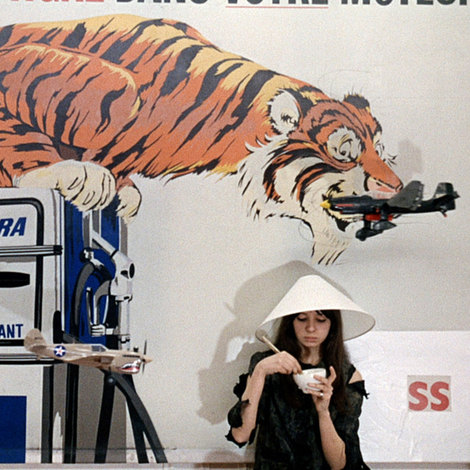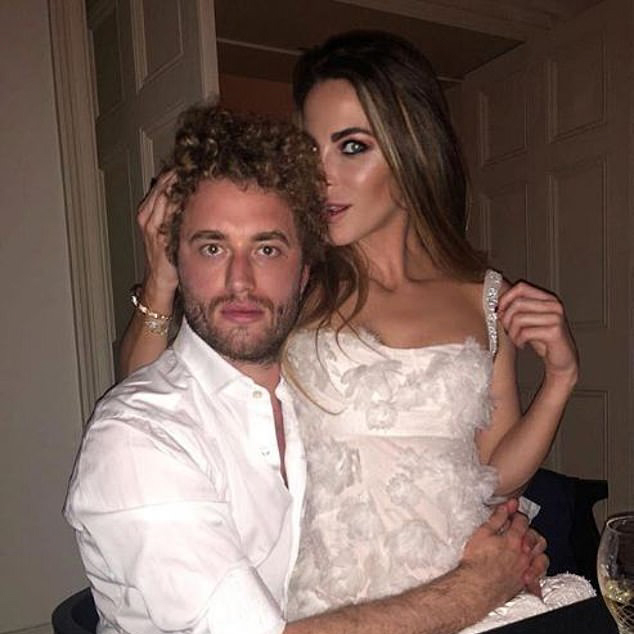He was browsing for souvenirs in a South Seas paradise when someone shouted out: “Are you Inigo?” In his designer swimming trunks and espadrilles, Inigo Philbrick, the boy wizard of the art world, barely had time to reply before they bundled him into the back of a car and whisked him away.
His arrest last month capped a chase that had led from art galleries in Mayfair and Miami to Vanuatu. The 33-year-old art dealer with a fondness for private jets and fine wines had been living on the South Pacific island since vanishing in November after being accused of swindling rich clients.
How this well-educated young art connoisseur with a high-society girlfriend and luxury lifestyle turned from toast of auctioneers to prison inmate is a tale of greed and excess that says as much about the pitfalls of an unregulated art market as it does about its one-time wonder boy.
“He went off the rails, he crossed the line,” Kenny Schachter, a former close friend of the dealer, said last week. “Greed and hubris played a part. But so did the easy money — and the idiots who wanted to make big money.”
Since Philbrick’s vanishing act eight months ago, civil lawsuits have alleged that the charming bon vivant had defrauded wealthy clients out of millions of pounds. He was accused of misappropriating sales proceeds, borrowing money against art he did not own and overselling shares in paintings to investors who had never set eyes on them.
The allegations against Philbrick have thrown a spotlight on some of the art market’s dirtiest corners, the byzantine deals used to prop up prices while keeping hidden the identities of buyers and sellers of works worth millions.
“His rationalisation was, ‘These people are rich, so screw them,’” said Schachter.
His former clients are baying for blood. “We are incredibly grateful for the government’s tremendous efforts in tracking down Philbrick and beginning the process of bringing him to justice,” said Judd Grossman, a lawyer representing various plaintiffs, including Aleksandar Pesko, a financier who once dated the Russian supermodel Natalia Vodianova.
“Greed and hubris played a part. But so did the easy money — and the idiots who wanted to make big money.”
Philbrick “sold pieces he didn’t own and played games with millions of dollars in other people’s money”, according to William Sweeney, an assistant director of the FBI, which tracked Philbrick to his Pacific hideaway.
A fugitive’s life in Vanuatu was a step down from what he was used to — the private planes, wild parties and $100,000 backgammon games chronicled in lurid detail by Schachter in an article in The Times while Philbrick was on the run. According to Schachter, Hollywood studios are battling for the film rights.
According to various accounts, Philbrick made no attempt to hide his identity and even bragged about his role in the London art scene. After police, acting on a request from the FBI, cornered him in the local artisanal market, friends in Vanuatu feared that he was being abducted by a disgruntled former client.
Still in his swimming trunks, his hands bound with zip ties, he was put on an unmarked plane to Guam, the American territory in the western Pacific. A few days later, US marshals provided him with a pair of trousers to appear in court and a judge approved his transfer to New York on charges of aggravated identity theft and wire fraud, which is punishable by up to 20 years in jail.

It was a humiliating denouement for the son of a respected former Connecticut art museum director. His career had got off to such a promising start in London. After graduating from Goldsmiths, University of London in 2010, he got an internship at the prestigious White Cube gallery. Jay Jopling, its founder, described him as intelligent and ambitious with “a good eye and an incredible instinct for business”.
By 2013, aged 25, and with seed money from Jopling, Philbrick opened his own gallery in Mayfair. Soon he was bidding at auctions for works worth millions. He was an expert in contemporary New York artists such as Rudolf Stingel, jokingly calling himself Stingeldamus — after the seer Nostradamus — because he believed he could foretell the soaring market in Stingel artworks.
Success came quickly. He spent winters in St Moritz and summers in Ibiza, where he was a regular at the Amnesia rave club with his girlfriend Victoria Baker Harber, former star of the reality television series Made in Chelsea.
But then the prices for his favourite artists started to go down. To save appearances, he allegedly began using money from his latest investors to pay off their predecessors — a slippery slope that led to disaster.
A fugitive’s life in Vanuatu was a step down from what he was used to — the private planes, wild parties and $100,000 backgammon games.
Judges will have to consider a tangled mess of overlapping claims, one of them concerning Humidity, a 1982 painting by Jean-Michel Basquiat, and another a portrait of Pablo Picasso by Stingel, whose work used to be prized by billionaires, investors and celebrities, including the actor Leonardo DiCaprio.
So much did Philbrick push up Stingel prices that his work is now hard to sell. “Everyone’s trying to get out of Stingel — but they can’t, they paid too much for it,” was how one Parisian art expert put it last week.
Philbrick allegedly sold the Stingel picture of Picasso to three investors, among them Pesko’s Satfinance Investment, Fine Art Partners, a German finance company, and Guzzini Properties, an offshore company owned by the Reuben brothers.
Schachter, an occasional dealer and curator who admits to making money with Philbrick before ceasing dealings with him in 2015, says he too has a claim against Stingeldamus, having paid him $1.68 million for a share in a Stingel — but receiving nothing in return. “I don’t know if he ever even bought it,” said Schachter.
In spite of that, he appears still to feel some affection for the old friend who flew him to art fairs on private jets and shared $6,200 bottles of wine with him. “He was very smart and funny, too,” he said. “It’s sad. He wasn’t a terrible person in the beginning.”
Instead of trying to claim in court what he says he is owed, Schachter sees partial compensation in a film deal he hopes to sign, based on his picaresque article about Philbrick’s escapades.

